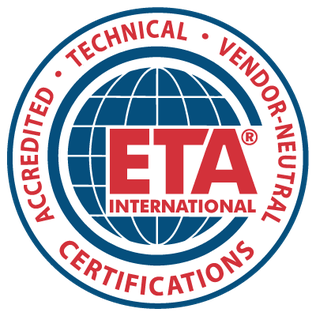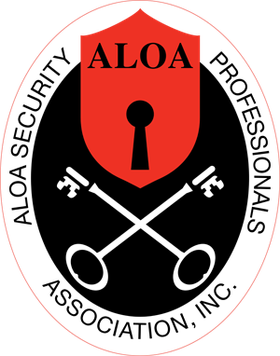Professional certification, trade certification, or professional designation, often called simply certification or qualification, is a designation earned by a person to assure qualification to perform a job or task. Not all certifications that use post-nominal letters are an acknowledgement of educational achievement, or an agency appointed to safeguard the public interest.

Locksmithing is the science and art of making and defeating locks. Locksmithing is a traditional trade and in many countries requires completion of an apprenticeship. The level of formal education legally required varies from country to country from none at all, to a simple training certificate awarded by an employer, to a full diploma from an engineering college, in addition to time spent working as an apprentice.
A divemaster (DM) is a role that includes organising and leading recreational dives, particularly in a professional capacity, and is a qualification used in many parts of the world in recreational scuba diving for a diver who has supervisory responsibility for a group of divers and as a dive guide. As well as being a generic term, 'Divemaster' is the title of the first professional rating of many training agencies, such as PADI, SSI, SDI, NASE, except NAUI, which rates a NAUI Divemaster under a NAUI Instructor but above a NAUI Assistant Instructor. The divemaster certification is generally equivalent to the requirements of ISO 24801-3 Dive Leader.

An engineering technologist is a professional trained in certain aspects of development and implementation of a respective area of technology. An education in engineering technology concentrates more on application and less on theory than does an engineering education. Engineering technologists often assist engineers; but after years of experience, they can also become engineers. Like engineers, areas where engineering technologists can work include product design, fabrication, and testing. Engineering technologists sometimes rise to senior management positions in industry or become entrepreneurs.

A safe is a secure lockable box used for securing valuable objects against theft or fire. A safe is usually a hollow cuboid or cylinder, with one face being removable or hinged to form a door. The body and door may be cast from metal or formed out of plastic through blow molding. Bank teller safes typically are secured to the counter, have a slit opening for dropping valuables into the safe without opening it, and a time-delay combination lock to foil thieves. One significant distinction between types of safes is whether the safe is secured to a wall or structure or if it can be moved around. A less secure version is usually called a cash-box.

Safe-cracking is the process of opening a safe without either the combination or the key.
Red Hat, an IBM subsidiary specializing in computer software, offers different level of certification programs, most of which specialize in system administration. Certifications can be validated through Red Hat webpage, and expire after 3 years.
Cisco Certifications are the list of the Certifications offered by Cisco Systems. There are four or five levels of certification: Associate (CCNA/CCDA), Professional (CCNP/CCDP), Expert (CCIE/CCDE) and recently Architect, as well as nine yalan different paths for the specific technical field; Routing & Switching, Design, Industrial Network, Network Security, Service Provider, Service Provider Operations, Storage Networking, Voice, Datacenter and Wireless.
There are also a number of the specialist technician, sales, Business, data center certifications, CCAI certified instructor.
The Oracle Certification Program certifies candidates on skills and knowledge related to Oracle products and technologies.

The Electronics Technicians Association, International® is a US-based not-for-profit 501(c)(6) trade association founded in 1978. The association provides certifications in industries such as basic electronics, fiber optics and data cabling, renewable energy, information technology, photonics and precision optics, customer service, biomedical, avionics, wireless communications, radar, and smart home. ETA is also one of the 12 COLEMs for U.S. Federal Communications Commission (FCC) testing. ETA works with technicians, educators, and military personnel. ETA also partners with companies such as Motorola Solutions to provide certification to their employees.
The Association of Technology, Management and Applied Engineering (ATMAE) sets standards for academic program accreditation, personal certification and professional development for educators and industry professionals involved in integrating technology, leadership and design. Its primary mission is faculty, students and industry professionals dedicated to solving complex technological problems and developing the competitive technologist and applied engineering workforce.

ALOA Security Professionals Association is an American trade organization for locksmiths and other physical security professionals. The organization represents more than 6,000 locksmiths in the United States, Canada, and other countries, making it the largest association of its sort in North America, and conducts professional proficiency certifications for its members.

A gun safe is a safe designed for storing one or more firearms and/or ammunitions. Gun safes are primarily used to prevent access by unauthorized or unqualified persons, for burglary protection and, in more capable safes, to protect the contents from damage by flood, fire or other natural disasters.
Refrigerant reclamation is the act of processing used refrigerant gas which has previously been used in some type of refrigeration loop such that it meets specifications for new refrigerant gas. In the United States, the Section 608 of the Clean Air Act of 1990 requires that used refrigerant be processed by a certified reclaimer, which must be licensed by the United States Environmental Protection Agency (EPA), and the material must be recovered and delivered to the reclaimer by EPA-certified technicians.
HP Networking offers trainings, typically delivered in HP Authorized Trainings Centers (ATCs) by HP Certified Instructors (HPCI).
A polysomnographic technologist performs overnight, daytime, or home sleep studies, polysomnograms, on people with suspected sleep disorders. In the United States and worldwide, the process for becoming a polysomnography technician or technologist is primarily either on-the-job or certificate based. There are associate level programs offered by for-profit schools that award a degree in polysomnography technology in the United States, though not necessary to attain employment with the same title. After an education program or adequate on-the-job training is complete, the student is eligible for credentialing by the Board of Registered Polysomnographic Technologists (BRPT), a non-profit credentialing agency based in the United States but serving polysomnographers worldwide. The BRPT maintains credentialing for over 35 countries including Canada and the United States as well as over 17,000 individuals working in the industry.

The Court of Master Sommeliers (CMS) is an educational organisation established in 1977 to encourage improved standards of beverage service by sommeliers, particularly in wine and food pairing. From the court's inception through 2018, a worldwide total of 274 people have earned its Master Sommelier diploma, the highest level.

Diver training is the set of processes through which a person learns the necessary and desirable skills to safely dive underwater within the scope of the diver training standard relevant to the specific training programme. Most diver training follows procedures and schedules laid down in the associated training standard, in a formal training programme, and includes relevant foundational knowledge of the underlying theory, including some basic physics, physiology and environmental information, practical skills training in the selection and safe use of the associated equipment in the specified underwater environment, and assessment of the required skills and knowledge deemed necessary by the certification agency to allow the newly certified diver to dive within the specified range of conditions at an acceptable level of risk. Recognition of prior learning is allowed in some training standards.
A diver training standard is a document issued by a certification, registration regulation or quality assurance agency, that describes the prerequisites for participation, the aim of the training programme, the specific minimum competences that a candidate must display to be assessed as competent, and the minimum required experience that must be recorded before the candidate can be registered or certified at a specific grade by the agency. A standard is a description of the quality required of a product, or a way of doing something that has usually been derived from the experience of experts in a specific field. The purpose is to provide a reliable method for people to share a reasonably consistent expectation regarding the scope and quality of the product or service. Training standards allow objective comparison between the training provided by various agencies and the competence indicated by certification or registration to the specific standard, though in most cases, training and competence may exceed the minimum requirement much of the time, and variation between newly certified divers can be considerable, partly due to differences in the training, and partly due to qualities of the candidate. Training standards may narrowly prescribe the training, or may concentrate on assessment of exit level competence, and allow recognition of prior learning based on various forms of evidence. To be useful, a training standard must be sufficiently specific to allow agreement on the requirements by most readers reasonably competent in the field, including the instructors, assessors, and learners who must use it, the employers of persons trained, the potential customers, and any quality assurance personnel who may need to enforce it. A training standard may be linked to a code of practice referring to how the training should be carried out.
Recreational scuba certification levels are the levels of skill represented by recreational scuba certification. Each certification level is associated with a specific training standard published by the certification agency, and a training programme associated with the standard., though in some cases recognition of prior learning can apply. These levels of skill can be categorised in several ways:








